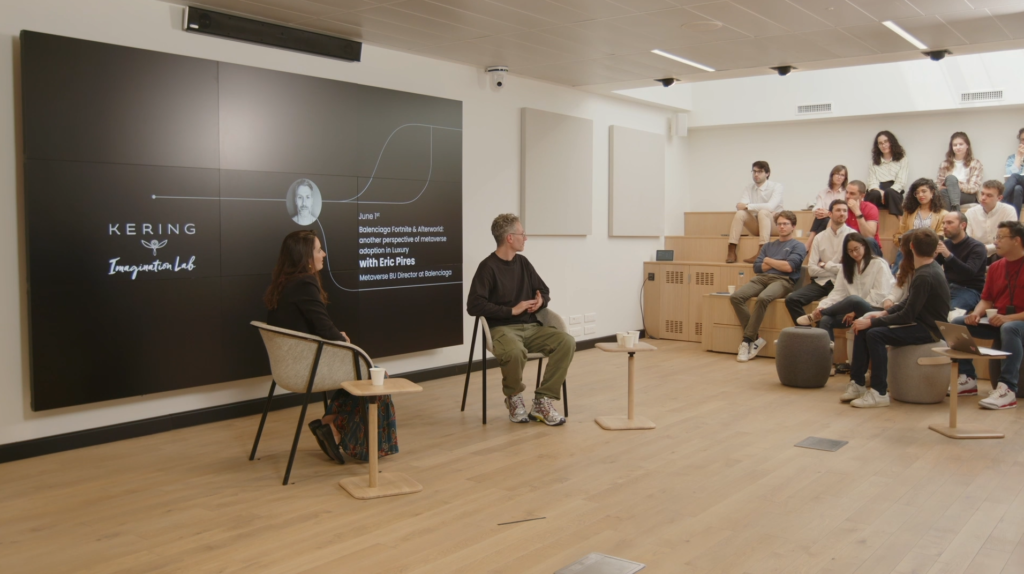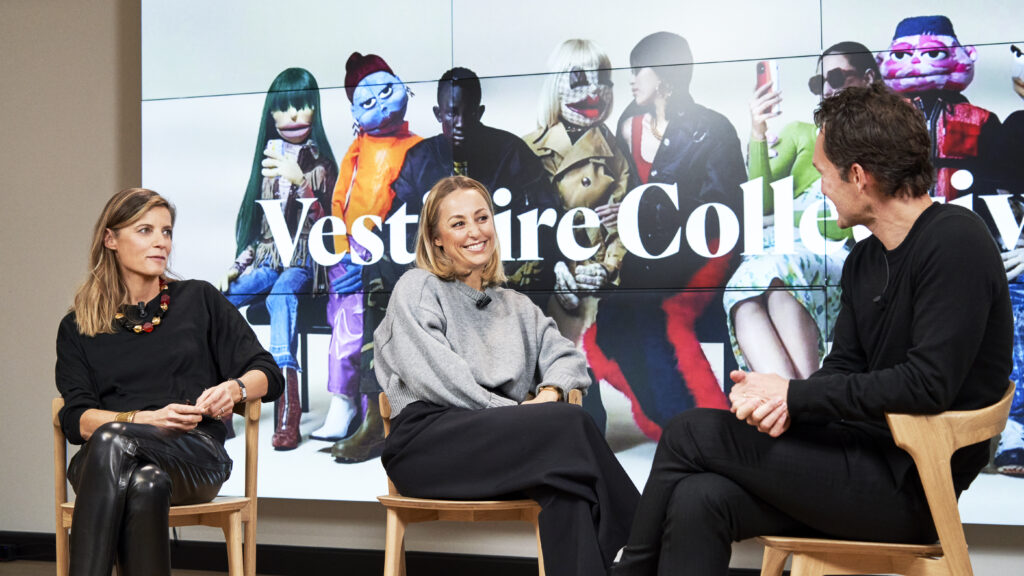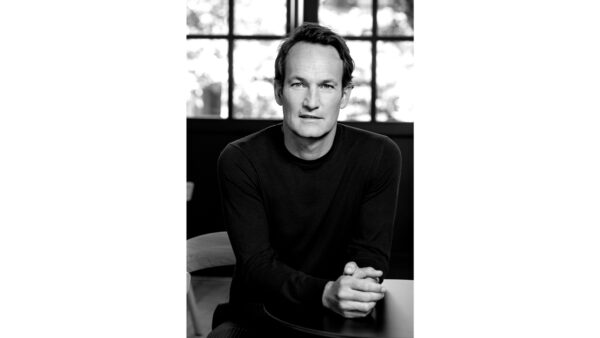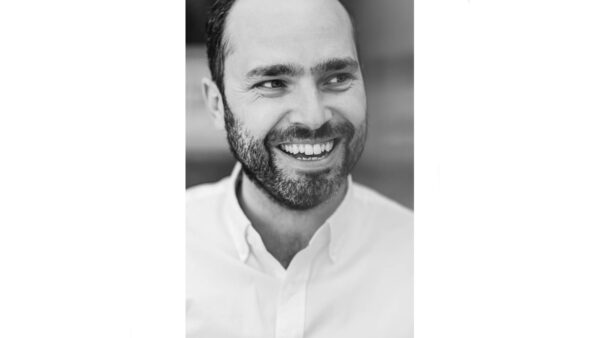How Kering Brings Together Luxury and Innovation
Despite the sector's sometimes conservative image, innovation has always been at the heart of Kering’s vision of Luxury. How is that vision integrated into the Group’s strategy? How is it then put into practice, concretely? Grégory Boutté, Chief Client & Digital Officer, explains the process.
Welcome to 15-17 Rue Monsieur
Nestled on the Left Bank of Paris, not far from Kering’s headquarters, a classic French hôtel particulier fuses Luxury codes with a start-up vibe. Touchscreens, whiteboards, and workshop spaces keep company with contemporary works of art and modern design. Welcome to the Kering Imagination Lab. Every day, Kering’s digital and innovation teams gather in spaces conceived for new modes of working. “From the outset, it was designed to embody the Group’s digitalization and express the intersection of luxury and innovation,” says Grégory Boutté, Chief Client & Digital Officer and lab lead. Far removed from the typical Luxury clichés of inaccessibility and secrecy, the building at 17 Rue Monsieur is an open-spirited gathering space that’s available to all Group employees. As the incubator for many initiatives to support and develop digital culture within the organization, it recently hosted a talk by Farfetch founder José Neves, which was broadcast live on Kering’s internal network. On another occasion, it welcomed a hackathon that pitched teams of employees from different Group brands and departments against one another.

A gathering space, it offers many initiatives to support and develop digital culture within the organization.
Innovation is Everyone’s Business
At Kering, “innovation is a culture that cascades throughout the organization. Everyone is always thinking about how to innovate in their work,” Grégory Boutté explains. “When you seize an opportunity to create a better way of responding to clients’ needs or managing our business, whatever the department, that’s innovation.” That vision, long championed by Kering chairman and CEO François-Henri Pinault, reflects the conviction that innovation should be used to enhance every stage in the Luxury value chain, from sourcing raw materials to product development and distribution.
In the digital domain, “it’s not about innovation for innovation’s sake,” Grégory Boutté notes, but rather “looking at how data and digital platforms can help Kering better serve its customers and its business.” Concretely, that means harnessing the potential of data and digital platforms to accelerate growth at the Group’s Houses (Digital for Growth), enhance the customer experience (Digital for Customers) and help reduce the environmental impact of our activities (Digital for Good). All of this must be based on close cooperation between the Group’s digital and IT teams and the Houses.
Using artificial intelligence, for example, is helping the Group to refine its sales projections and adjust production volumes accordingly. It therefore responds better to customer requests, limits unsold stock, and reduces our carbon footprint. The use of 3D design is another example, as it removes some of the practical constraints of product development and gives creative teams broader scope.
Anticipating the Luxury of the Future
Grégory Boutté’s teams also study emerging business models and disruptive innovations that might transform how Luxury is consumed. In light of these new trends, Kering has devised a two-pronged strategy.
The first step is “to establish clear opinions about potentially disruptive subjects and how they might be integrated into Kering’s business model in order to better serve customers,” explains Grégory Boutté. At that stage, regardless of the innovation concerned, the top priority remains constant: an innovation can only be relevant if it enhances the Luxury experience. “Our role is to identify those innovations that can make Luxury even more magical,” he concludes. That golden rule has led Kering to do away with the idea of using connected mirrors in stores, for example, and to successfully launch the Luce app, which offers customers more personalized and efficient service in a boutique environment.
To confirm or dismiss their hypotheses, the innovation teams then test developments in real-world conditions, by launching pilot projects with Houses or by acquiring minority stakes in start-ups via Kering Ventures, a dedicated investment entity created specifically for this purpose. A good example of this approach is our collaboration with Vestiaire Collective, a luxury resale startup in which Kering invested, and which now works with Alexander McQueen and Gucci on customized resale (Resale as a Service).

Partnering with startups, learning from them, testing ideas on a small scale, and integrating feedback is an iterative process that’s characteristic of today’s agile development methods. It means that Kering can anticipate evolutions in Luxury in the medium- and long-term, prepare for them, and create a competitive advantage for the future. Spread across the organization, those skills and culture will ensure that Kering continues to pioneer and invent the Luxury of tomorrow.




